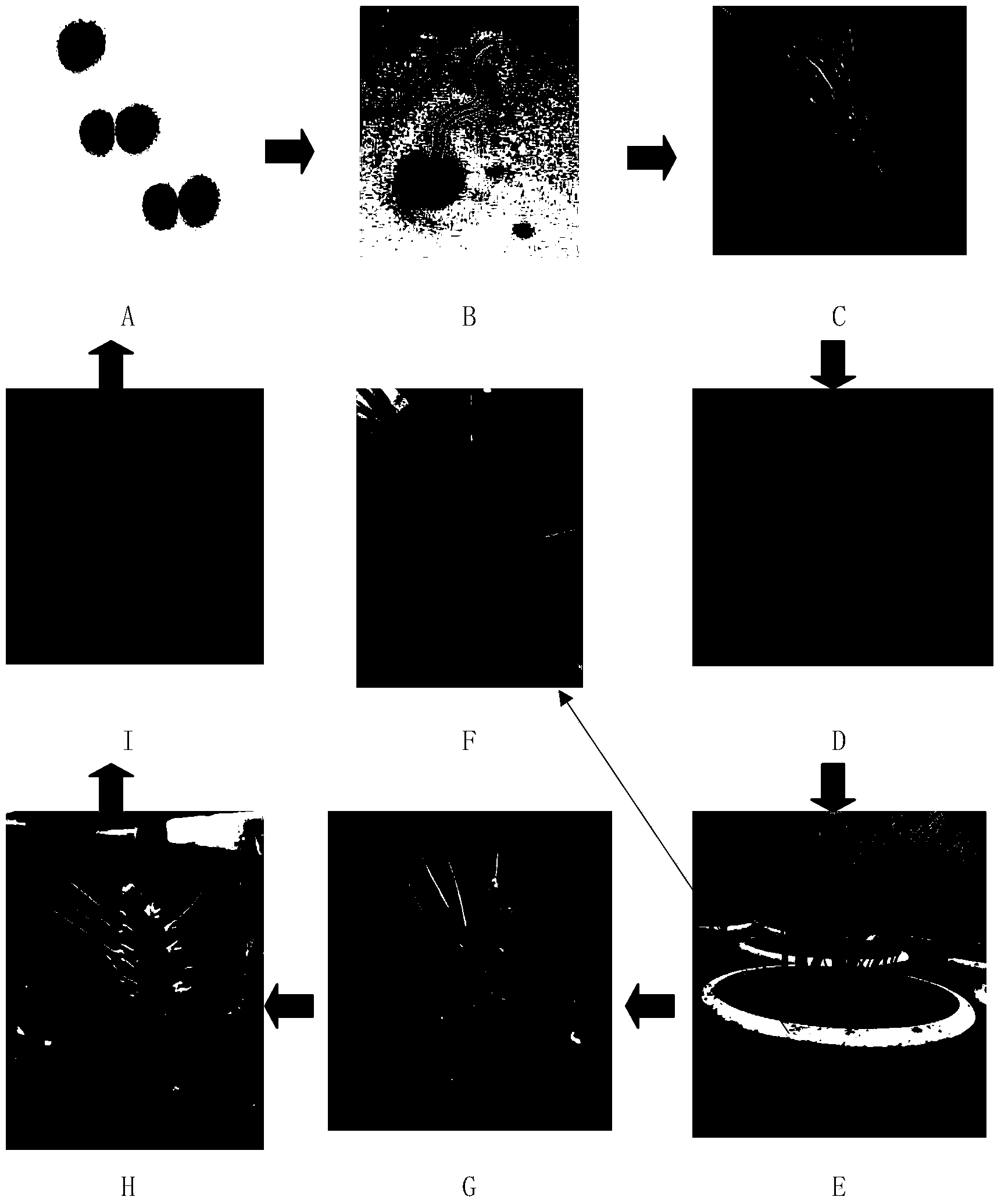Method for cultivating tilletia controversa kuhn disease plants in indoor environments
A technology of T. dwarf and its cultivation method, which is applied in the field of indoor cultivation to obtain T. dwarf diseased plants, can solve the problems of bacteria diffusion, research limitations, and unclear environmental conditions, so as to strengthen prevention and control and improve infection Activity, the effect of increasing the infection rate
- Summary
- Abstract
- Description
- Claims
- Application Information
AI Technical Summary
Problems solved by technology
Method used
Image
Examples
Embodiment 1
[0041] Embodiment 1 TCK teliospore concentration influence research on germination
[0042] Materials and Methods
[0043] The tested strain was intercepted from the port in 2011, and it was detected by electron microscopy as Tilletia tritici. The inventor's laboratory is preserved, and can be released to the public for verification tests within 20 years from the date of application. The method of the present invention has no special requirements for strains, and other T. tritici strains can also be used to verify the present invention.
[0044] Take 1 gall from the diseased ear, put it in a 2mL centrifuge tube, add an appropriate amount of distilled water to soak the gall, let it stand for 30 minutes, then mash the gall and shake it fully, filter it through a 150-mesh sieve, and put the filtrate in the Cultivate at room temperature for 24 hours, discard the supernatant after low-speed centrifugation, add 0.25% NaClO aqueous solution and place at room temperature for 1 minu...
Embodiment 2
[0053] The indoor culture of embodiment 2 wheat dwarf Tilletia smut pathogenic plants
[0054] 1. Preparation of germinated teliospores of T. tritici
[0055] (1) Surface disinfection treatment of teliospores of T. dwarfis: Take 1 gall from the diseased ear, put it in a 2mL centrifuge tube, add appropriate amount of distilled water to soak the gall, let it stand for 30 minutes, and then mash the gall And shake fully, filter with 150 mesh sieve, incubate the filtrate at room temperature for 24 hours, discard the supernatant after low-speed centrifugation, add 0.25% NaClO aqueous solution and place it at room temperature for 1 min to carry out surface disinfection, wash with sterilized water for 3 The second time, use a hemocytometer to adjust the teliospores in sterilized water to (50-130)×104 / mL.
[0056] (2) Germination of teliospores of T. tritici: add the prepared teliospore suspension to the pre-made soil extract medium plate (1000mL medium contains 20g agar, 5mg 800,000 ...
PUM
 Login to View More
Login to View More Abstract
Description
Claims
Application Information
 Login to View More
Login to View More - R&D Engineer
- R&D Manager
- IP Professional
- Industry Leading Data Capabilities
- Powerful AI technology
- Patent DNA Extraction
Browse by: Latest US Patents, China's latest patents, Technical Efficacy Thesaurus, Application Domain, Technology Topic, Popular Technical Reports.
© 2024 PatSnap. All rights reserved.Legal|Privacy policy|Modern Slavery Act Transparency Statement|Sitemap|About US| Contact US: help@patsnap.com










